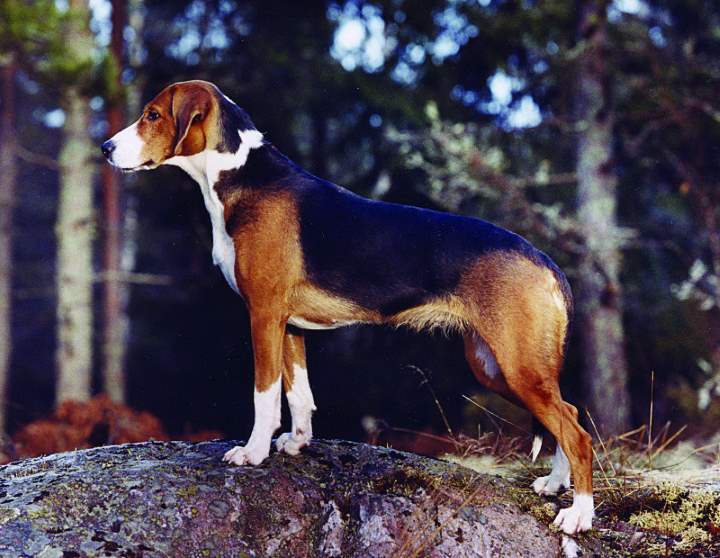The Hamiltonstövare, as most of the Swedish scent hounds, derives from continental hounds, of the East European type that came to Sweden with returning soldiers from the great wars during the 17th and 18th century.

During the 19th century additions of English Foxhounds, Harriers and Swiss hounds were used in the development of the different Swedish scent hounds.
The type today known as Hamiltonstövare was earlier called Swedish Hound. In 1921 the breed was renamed to honour its foremost advocate and breeder, count Adolf Patrik Hamilton, founder of the Swedish Kennel Club.
The Hamiltonstövare is used for hunting hare and fox, never deer or roe. It tracks game by sniffing the ground at high speed, hence the importance of a long, strong, neck and well angulated forequarters.
It goes without saying that the voice is of utmost importance for the breed. It has to be clear and sharp to be able to be heard for miles and guide the hunter.
The breed is easy to train and has an even and friendly temperament that also contributes to its popularity. The main feature of the breed is its outstanding hunting ability.
Appearance and size
The Hamiltonstövare is a rectangularly built dog, agile and muscular with an impression of strength, stamina and endurance. The neck is strong and long and the breed's general appearance must never be heavy or coarse. The coat is short and glossy and the colours striking with a well defined black mantel, rich golden to rusty red tan with symmetrical pure white markings.
The height at the withers for males is ideally 57 cm with an allowance of 53–61 cm. Females are ideally 53 cm but allowed to be 49–57 cm.
Breed registration statistics
Below you can find the registration statistics for the Hamiltonstövare in the Nordic countries from 1990 onwards.
| | Sweden | Denmark | Finland | Iceland | Norway |
|---|
| 2015 |
265 |
0 |
0 |
0 |
74 |
|---|
| 2010 |
258 |
0 |
0 |
0 |
32 |
|---|
| 2005 |
382 |
0 |
0 |
0 |
120 |
|---|
| 2000 |
714 |
0 |
0 |
0 |
161 |
|---|
| 1995 |
947 |
0 |
0 |
0 |
200 |
|---|
| 1990 |
1635 |
0 |
2 |
0 |
118 |
|---|